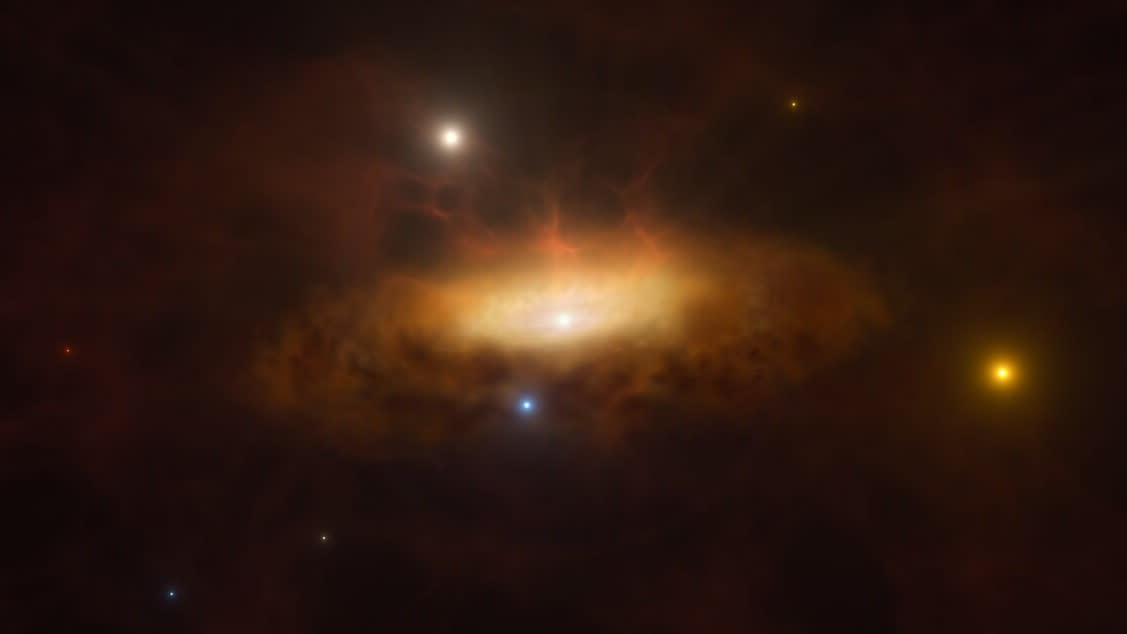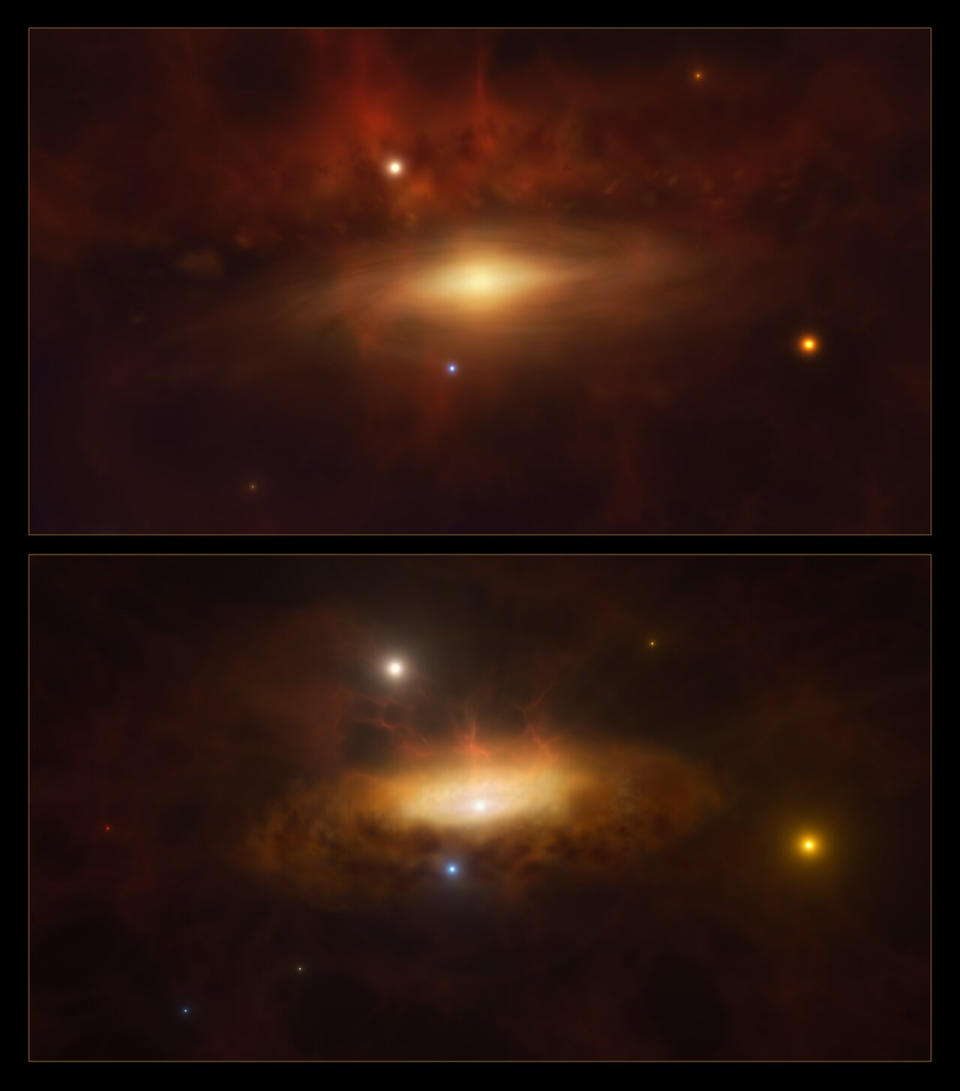A massive black hole may be 'waking up' in a nearby galaxy

In December of 2019, the sky-scanning Zwicky Transient Facility — a telescope perched on California's Palomar Mountain — alerted astronomers to a sudden flare coming from an otherwise unremarkable galaxy some 300 million light-years from Earth in the constellation Virgo. The flare's intensity dipped and peaked dramatically over four years, but it continues to persist even today. That's unusually long for such a flare — so long, in fact, that it can't be explained by any typical cosmic phenomena.
"This behavior is unprecedented," Paula Sánchez-Sáez, an astronomer at the European Southern Observatory in Germany, who led the discovery, said in a statement.
The researchers suspect we're witnessing a giant black hole lurking in the galaxy's heart as it wakes up from a deep slumber by feasting on surrounding gas. This gaseous material reaches scorching temperatures just before it falls into the cosmic abyss, creating light shows detectable by the Zwicky telescope. If that's really the case, this would be the first time we've spotted a black hole "switch on," Sánchez-Sáez and her colleagues announced on Tuesday (June 18).

A million times heavier than our sun, this black hole has been "sleeping" for at least the past two decades. The galaxy in which it resides, SDSS1335+0728, has been observed by astronomers for years, but a flare like the one sparked in 2019 "has never been observed before" in real-time, study co-author Lorena Hernández García, of the Millennium Institute of Astrophysics in Chile, said in the statement.
Related: At the heart of this distant galaxy lies not 1, but 2 jet-blasting black holes
After analyzing a combination of archival observations gathered by multiple telescopes before and after the 2019 event, the researchers found the galaxy is now radiating "much more light" across multiple wavelengths including ultraviolet, optical and infrared.
It's possible the four-year-long flare is hinting that an ill-fated star once ventured too close to the black hole and became shredded, but even the slowest of black hole-induced stellar deaths last at most a few hundred days. Astronomers are still learning about various speeds with which black holes gobble nearby matter, which often defines how the black holes' host galaxies evolve over eons.
Related Stories:
— Cosmic Photos: Zwicky Transient Facility First Light
— Supernova algorithm classifies 1,000 dying stars without error
— Flashy 'dance' of two monster black holes captured by NASA's Spitzer Space Telescope
The years-long flaring seen in SDSS1335+0728 is unlikely to be due to explosive events known as supernovas that occur when stars run out of fuel supply necessary for intrinsic nuclear fusion and die, which are known to last for days or a handful of months — leaving astronomers none the wiser about what sparked the mysterious glow.
"With the data we have at the moment, it's impossible to disentangle which of these scenarios is real," Sánchez-Sáez told The Guardian. "We need to keep monitoring the source."
A paper describing these findings has been accepted for publication in the journal Astronomy & Astrophysics.

